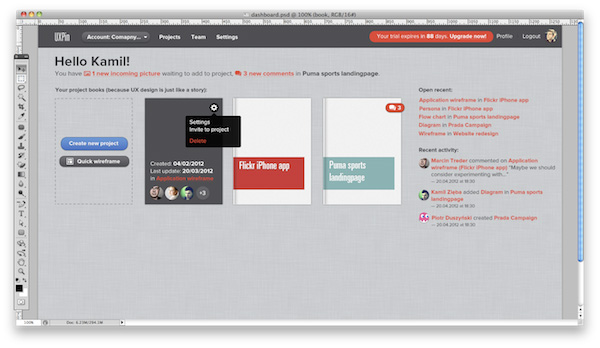Mobile developers today are widening the scope of their expertise; they
are not only solving these issues but are developing mobile websites
that have impressive layouts, are touch-friendly and are based on
frameworks that work flawlessly on smartphones and tablets.
Generally, JavaScript has made it easy to use touchscreen devices.
With it, we can enable websites to respond to finger gestures such as
tap, scroll and zoom. JavaScript has not only resolved cross-browser
compatibility issues but has made it easy to develop cross-platform
websites, which increases the number of users.
Most JavaScript frameworks are lightweight, which makes web browsing
fast without compromising the look of a website. Mobile websites
increasingly use HTML5 and CSS3, adhering to the W3C
specifications—which are another boon to JavaScript frameworks.
If you are not using a CSS framework in your current workflow, you
should seriously consider it. To work with a framework, you will of
course need to learn how to use it, but once you learned the advantages
are quite huge.
Not only working with a framework will let you build websites faster,
but it will also encourage you pay more attention to things some web
designers overlook, like using a grid, including a print stylesheet, or
making your site responsive, among other things. Now let’s take a look
at the best and most popular CSS frameworks.
jQuery Mobile: Touch-Optimized Web Framework for Smartphones & Tablets
A unified, HTML5-based user interface system for all popular mobile
device platforms, built on the rock-solid jQuery and jQuery UI
foundation. Its lightweight code is built with progressive enhancement,
and has a flexible, easily themeable design.
Seriously cross-platform with HTML5
jQuery mobile framework takes the "write less, do more" mantra to the next level: Instead of writing unique apps for each mobile device or OS, the jQuery mobile framework allows you to design a single highly-branded web site or application that will work on all popular smartphone, tablet, and desktop platforms. Device support
The-M-Project is a Mobile HTML5 JavaScript Framework that helps you build great mobile apps, easy and fast. The-M-Project is Open Source Software published under the MIT License. This gives you total flexibility for your development. Build great free and commercial apps with it.
With its model-view-controller (MVC) architecture, The M Project is
popular among mobile developers for several reasons. The open source
module, which is based on MVC, allows developers to isolate the data
from the business logic. Moreover, the JavaScript framework supports
multiple devices, making it easy to develop apps and websites that for
smartphones, tablets and desktop computers.
Deliver a real-time view of all your mobile apps
The Appcelerator Dashboard displays all relevant information about your
portfolio of mobile apps. It enables developers, architects, testers,
managers, project teams, and business owners to view, analyze and take
action to get their job done. Whether it is getting an aggregate view of
all applications or drilling down into an individual project or app,
Appcelerator’s Dashboard, through a “Single System of Engagement”,
enables all parties involved in the Continuous Mobile Innovation
Lifecycle to get the information they need, when they need it, and take
action.
Appcelerator Studio allows the creation of native apps
across the widest range of devices and operating systems (e.g., iOS,
Android, BlackBerry, Tizen, Denso mobile web and more). Designers and
developers can work together in Appcelerator Studio to rapidly prototype
the real app.
Appcelerator Cloud pre-built services provide
developers with the widest set of scalable mobile services. This
includes push notifications, photos, social connections, authorization
and much more. Our Cloud unifies the development environment for
connecting apps to the mobile cloud.
Appcelerator Cloud custom services enable custom data
integration with back end systems. Using our Node.js offering,
developers can quickly and easily create mobile-optimized APIs that
orchestrate data from multiple data sources such as SAP, Salesforce.com,
Oracle, Sharepoint and others.
Counted among the best JavaScript frameworks,
Sencha Touch
is also a preferred framework among mobile web developers. The
full-featured widget library is based on the Ext JS JavaScript library
and targeted for Class A WebKit browsers. This high-performance HTML5
framework can be used for developing apps for multiple mobile operating
systems, including iOS, Android, BlackBerry OS and Kindle.
The latest from Sencha Touch boasts an easier API, enhanced MVC and increased speed with native packaging, which is easy to use.
Free JavaScript Mobile Framework for HTML5 Web Apps
DHTMLX Touch is a free open source JavaScript library for building HTML5-based mobile web apps.
It's not just a set of UI widgets, but a complete framework that allows you to create eye-catching,
robust web applications that run on iOS, Android, and other mobile platforms.
If you are looking for a framework that advocates minimal coding, choose
DHTMLX Touch.
The user interface is easy to use and the framework lets developers
churn out different kinds of apps for different mobile platforms.















